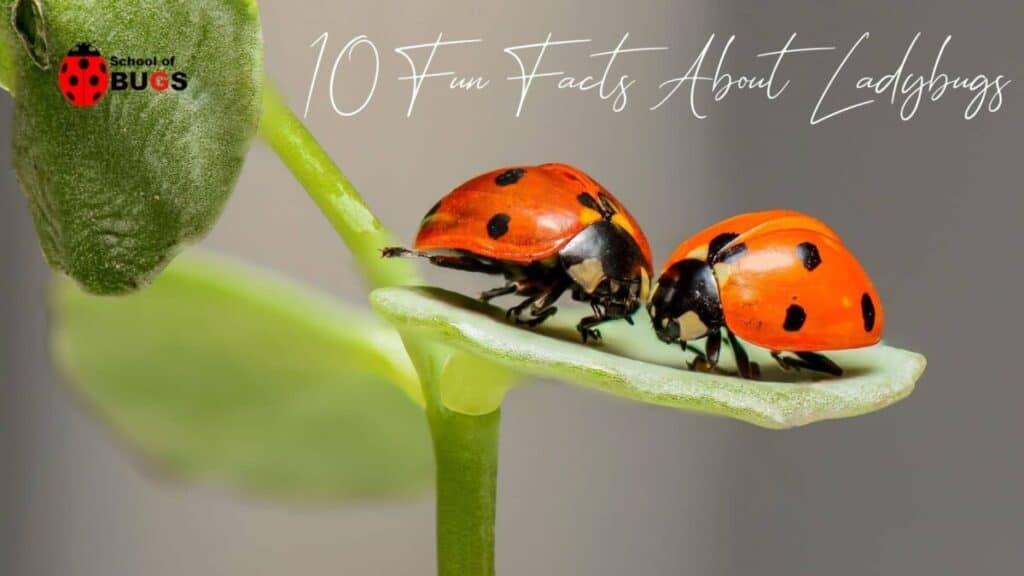
Is there a cuter insect than the ladybug? Maybe, but ladybugs certainly go into the top 10! They are not only colorful, cute, and harmless, but it’s also said that they bring good luck.
But how much do you know about these adorable creatures? Here are some less-known facts about ladybugs:
#1 A Group of Ladybugs is Called a Loveliness
A group of cows is called a herd, many birds together are usually called a flock of birds, but what about ladybugs?
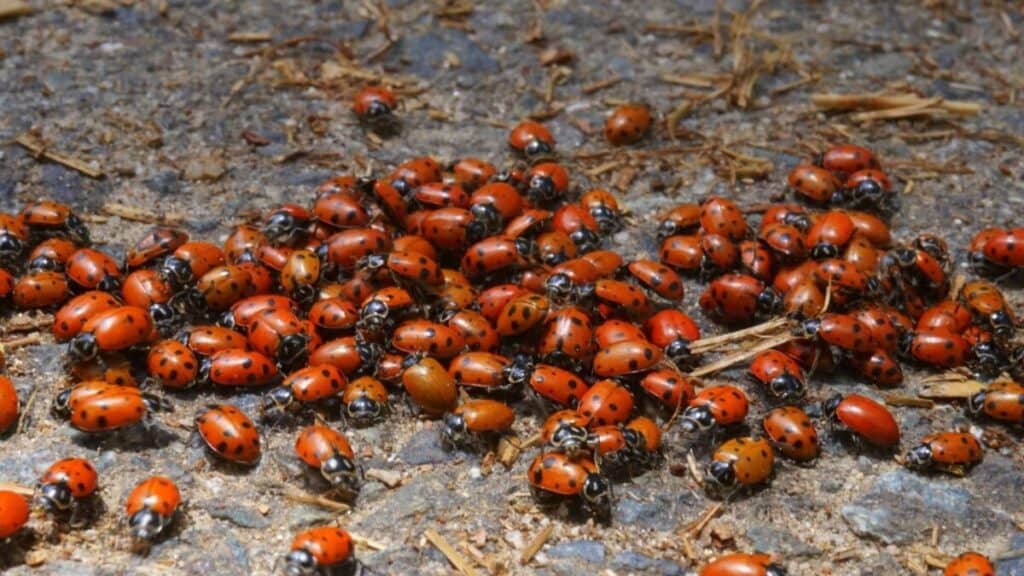
A swarm of ladybugs? Well, officially, it’s loveliness! A loveliness of ladybugs or ladybirds. How cute is that?
#2 Ladybugs Are Actually Beetles
Technically, ladybugs are not bugs, they are beetles. According to biological classification, ladybugs belong to the order Coleoptera which is Latin for beetles.
There are about 5,000 known species of ladybugs and they form the family Coccinellidae.
Ladybugs are classified as beetles because they are related to each other through evolution. And even today, they share many physical characteristics with other beetles, such as the pair of shiny hardened wings.
Just imagine if a ladybug would be 10 times larger. It would surely look like a beetle then, wouldn’t it?
#3 Ladybugs Come In a Variety of Colors
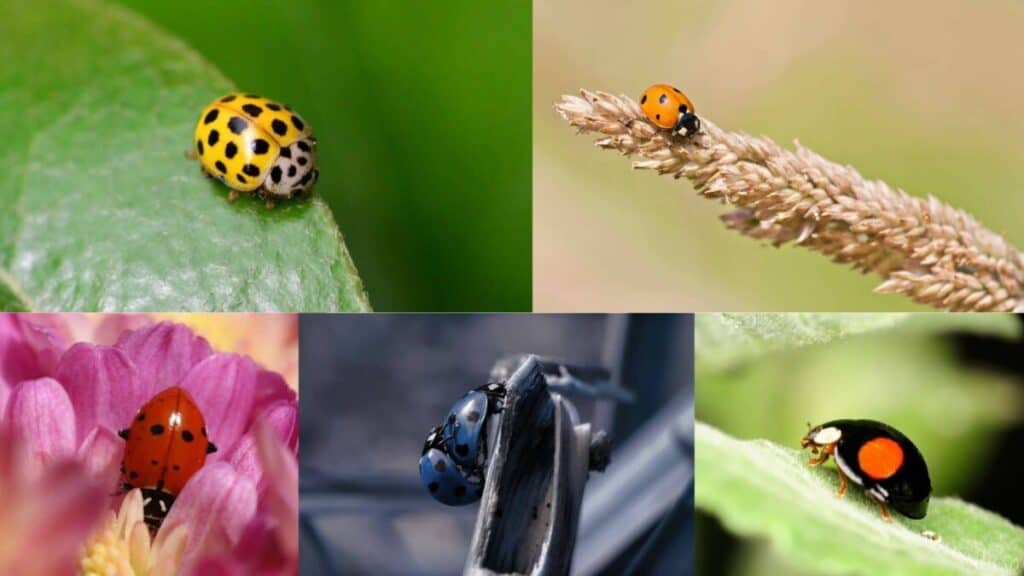
The scientific name for ladybugs, Coccinellidae comes from the Latin word coccineus which means scarlet or red.
However, the name is not entirely appropriate as not all ladybugs are red! Some ladybugs are yellow, orange, black, or even metallic blue.
Whichever the color of their shell, it is usually very bright. The purpose of the bright color is to warn predators – it signals that the ladybug is poisonous (which might or might not be true).
#4 Baby Ladybugs Look Like Tiny Alligators
Ladybugs go through 4 stages during their life. They start as eggs, they then turn into larvae which turn into pupae out of which an adult ladybug emerges.
When they hatch from their eggs, ladybug larvae don’t look anything like the adults. They have no wings or shiny shells. Instead, they look somewhat like tiny alligators with spikes all over their bodies.
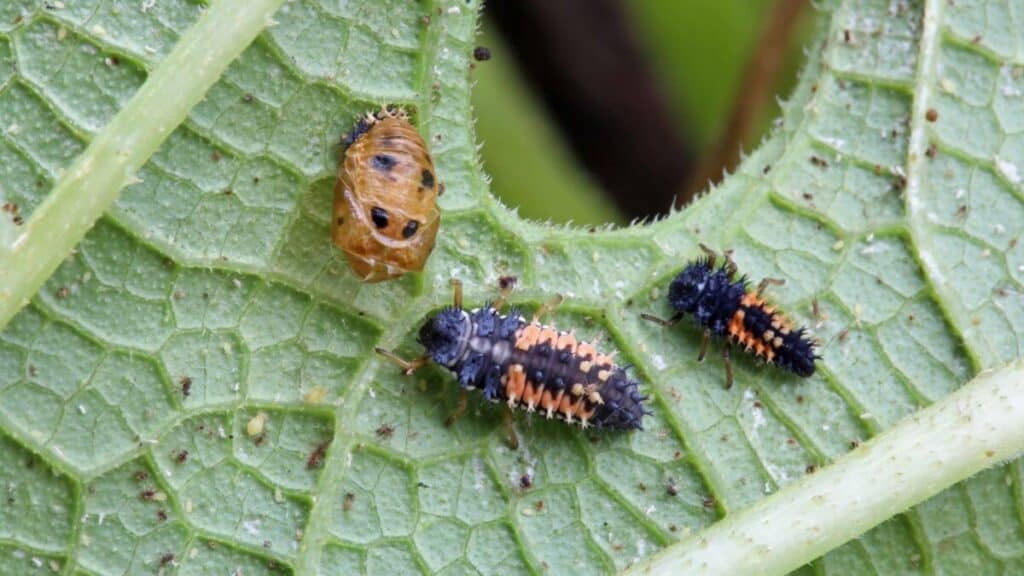
Ladybug larvae are usually black with orange markings on their backs, but the color does depend on the species.
#5 Ladybugs Can Sleep Through the Winter
If you live in any place on Earth that has cold winters, you’ve probably noticed that ladybugs appear only during the warmer months.
But where do they go during winter? Well, they find somewhere cozy to hide and sleep right through the winter! The typical hiding places are under rocks, under tree bark or in rotting logs.
Ladybugs will look for a place that is somewhat protected from the cold for their winter home, which is why sometimes they also enter houses in late autumn.
These cute bugs usually gather in a big group to hide together for the winter. When the weather gets warm enough, they wake up and start going about their business as if nothing happened!
#6 Ladybugs Are Voracious
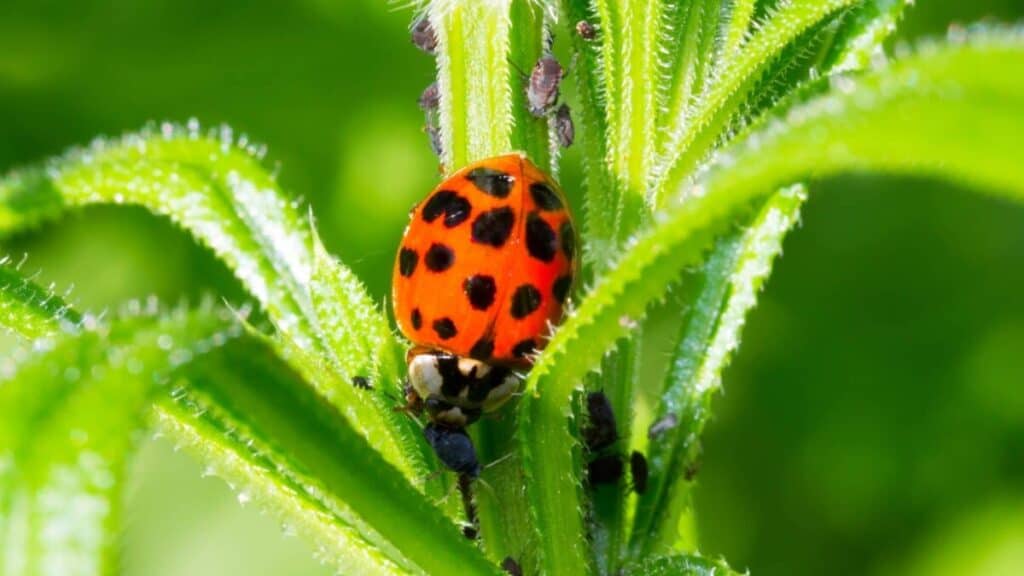
Although they appear as tiny cute things to us, in the world of aphids, ladybugs are real monsters.
According to some estimates, a single ladybug can eat up to 75 aphids in a single day. In its lifetime, it will probably eat many thousands of tiny insects.
In fact, that’s why ladybugs are one of the best examples of natural pest controls. When plants are infected with aphids, all it takes is a ladybug squad to take care of the problem.
#7 Ladybugs Have a Hidden Set of Foldable Wings
Have you ever watched a ladybug fly? You might have noticed that their wings do look kind of weird when they fly. If you looked closely, you could also notice that there are two sets of wings.
The external wings of the ladybug form the hard shell, usually red and with spots, that we are used to seeing.
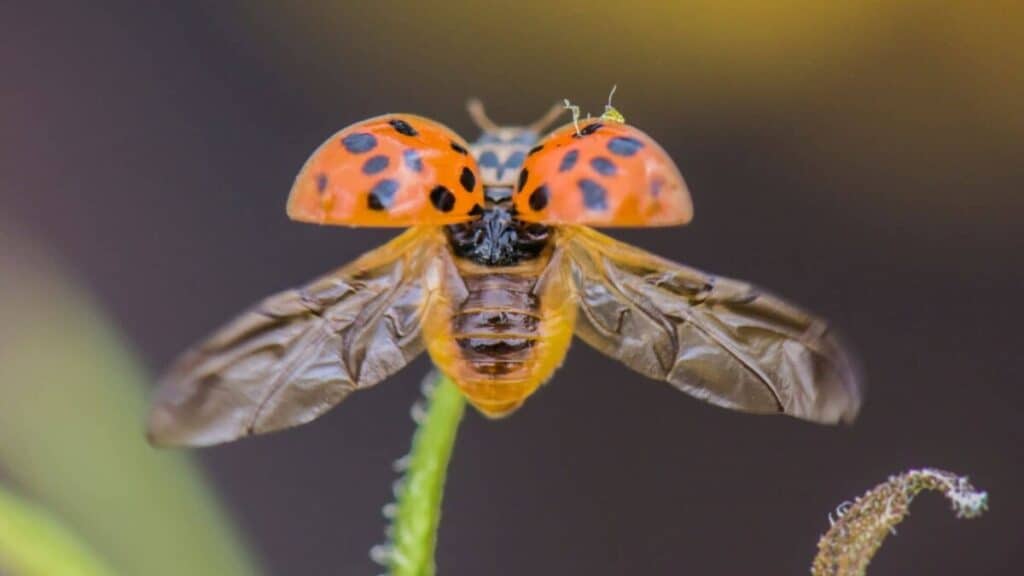
When it wants to fly, the ladybug lifts these external wings to uncover another pair of larger, foldable, transparent wings.
This is also why ladybugs need a bit of time when they want to take off. But once they do, their wings beat very fast and allow the tiny bug to reach speeds of up to 47 miles an hour.
#8 Ladybugs Sometimes Eat Their Own Eggs
Ladybugs like to lay their eggs on the underside of leaves. They lay their tiny yellow legs in characteristic clusters, and usually pick plants where there are a lot of aphids present.
Thus, when the larvae hatch, they will have lots of aphid snacks around just waiting to be eaten.
However, if the ladybug mom cannot find an appropriate food source for the babies, she may lay several so-called trophic eggs.
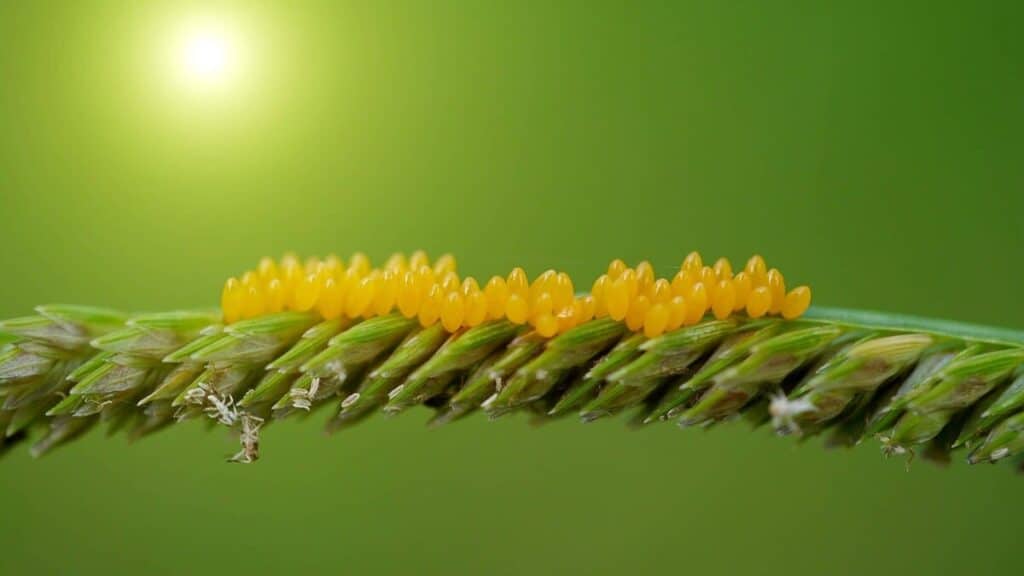
Trophic eggs are infertile eggs that are meant to be a source of food. So, when the babies hatch from the fertile eggs, they will be able to munch on the food eggs.
Quite bizarre, right? By the way, some ants do this too!
#9 NASA Sent 4 Ladybugs Into Space
In 1999, NASA put 4 ladybugs in a space shuttle and sent them off into space. They were not the only passengers, of course. But they had quite an interesting role.
The “Ladybugs in Space” experiment involved taking the 4 ladybugs and a bunch of aphids into space to see how they will act when there is no gravity.
And they did well – managing to eat the aphids and hence survive in space.

Fun fact: the 4 space ladybugs were named after The Beatles: John, Paul, Ringo, and George.
#10 There Is a Story Behind Their Name
Ever wondered why the ladybug has such a peculiar name? Is it because of their cute costumes? Well, actually no.
The ‘lady’ in this case refers to Virgin Mary. According to the legend, once upon a time farmers prayed to the Virgin to save their crops from pests.
Then came the ladybugs, and ate all the aphids, thus saving their crops. The small beetles then received the name ladybugs, as the farmers believed the Virgin Mary had sent them as help.
Interestingly, this story originates from Europe and is connected to the typical red ladybug with 7 spots on its back.
This supported the connection to Virgin Mary as the seven spots were thought to symbolize the 6 sorrows she suffered.
Alright, that’s it for this article, here are a few hand-selected articles that you might also find interesting reads:
Ladybugs: What Makes Them Unique? Differences Between Ladybugs and Aphids/Bees/ButterfliesAre Ladybugs of a Particular Color Poisonous?
How Do Ladybugs See? This surprised me!
Recent Posts
Tiny Black Bugs in Bathroom NO WINGS: What They Are and What to Do!
Finding tiny black bugs in your bathroom can be uncomfortable, to say the least. Especially if they are persistent, or they appear in very large numbers, which they often like to do. When it...
Tiny Black Bugs in Plant Soil - What Are They & What To Do About It
A short horror story: You get a new houseplant. You do your best to take care of it. You’ve ensured that it has the right soil, the right amount of sun, it gets enough water. And then one day, you...

